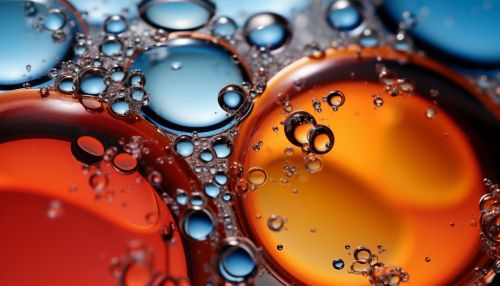Colloids
Introduction
A colloid is a type of mixture in which one substance is dispersed evenly throughout another. The particles of the dispersed substance are only suspended in the mixture, unlike a solution, where they are completely dissolved. This means that colloidal particles are larger than those in a true solution, and are able to scatter light; this scattering of light is called the Tyndall effect.
Classification of Colloids
Colloids can be classified based on different criteria:
Based on the Nature of Interaction Between Dispersed Phase and Dispersion Medium
- Lyophilic Colloids: These are solvent-attracting colloids. The liquid dispersed in the medium is attracted to the liquid it is dispersed in. Examples include proteins, starch, and rubber.
- Lyophobic Colloids: These are solvent-repelling colloids. The dispersed phase does not interact with the dispersion medium. Examples include metals and their sulfides.
Based on the Type of Particles of the Dispersed Phase
- Multimolecular Colloids: These are colloids that consist of a large number of atoms or small molecules of a substance that aggregate together to form a particle size in the colloidal range. Examples include gold sols, sulphur sols, etc.
- Macromolecular Colloids: These are colloids that consist of macromolecules such as proteins and synthetic polymers that form a size in the colloidal range. Examples include starch, cellulose, gelatin, rubber, etc.
- Associated Colloids: These are colloids that consist of substances that behave as normal electrolytes at low concentrations, but exhibit colloidal properties at higher concentrations due to the formation of aggregates. Examples include soaps and detergents.


Properties of Colloids
Colloids exhibit several unique properties that distinguish them from other types of mixtures.
Tyndall Effect
The Tyndall effect is the scattering of light by particles in a colloid or particles in a fine suspension. This effect is used to determine whether a mixture is a true solution or a colloid.
Brownian Movement
Particles in a colloid can move randomly due to the collisions they undergo with the molecules of the dispersion medium. This random movement is known as Brownian motion.
Coagulation
If a colloid is destabilized, the particles in the dispersed phase can aggregate together to form larger particles. This process is known as coagulation or flocculation.
Adsorption
Colloid particles often have a high surface area to volume ratio, allowing them to adsorb a large amount of material. This property is used in many applications, including water purification and in medicine.
Applications of Colloids
Colloids have many important applications in various fields:
- In Industry: Colloids have important applications in industries such as paint, ink, rubber, plastic, dye, and cosmetic industries.
- In Medicine: Colloids find extensive use in medicine in forms like lotions, ointments, gels, etc. They also form the basis of many diagnostic procedures.
- In Purification of Water: Colloids can remove dirt, microbes, and other particles from water, making it safe to drink.
- In the Food Industry: Many foods are colloidal in nature. Examples include butter, milk, cream, etc.
